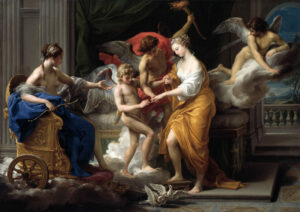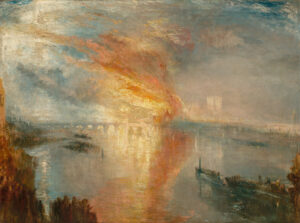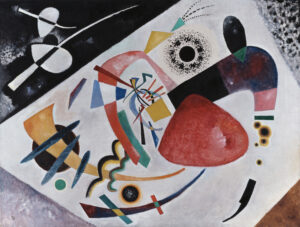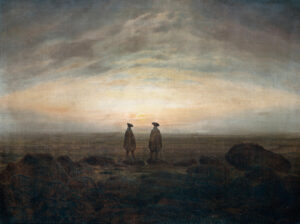
The Dutch Golden Age (1584-1702) represents an extraordinary historical phenomenon: a small republic of barely 1.5 million inhabitants, without significant natural resources, establishing itself as the world’s leading commercial power while Europe languished in economic stagnation.
This meteoric rise was rooted in the conflict with Spain. The Eighty Years’ War (1568-1648), triggered by Philip II’s religious persecution of Calvinism, led to the formation of the Republic of the Seven United Provinces (1581). Control of Rhine river trade and the blockade of the Scheldt estuary—depriving Antwerp of its maritime access—provided decisive advantages for this young nation.
The political organization of the United Provinces presented a remarkably progressive structure for its time. Though oligarchic, this confederation offered more democratic governance than neighboring monarchies. Power resided with the merchant bourgeoisie rather than the traditional aristocracy, fostering a remarkably mobile society where social status derived more from wealth and merit than from birth.
Demographics played a crucial role. The Netherlands boasted Europe’s highest urbanization rate, with nearly 50% of the population living in cities. Amsterdam grew from 100,000 to 200,000 inhabitants between 1622 and the end of the century, Rotterdam from 20,000 to 80,000, and The Hague from 16,000 to 50,000. This growth accompanied urban innovations such as Amsterdam’s concentric canal system.
Economic and Commercial Foundations
Dutch power rested on unparalleled maritime commercial dominance. By 1670, the republic possessed approximately 15,000 ships—five times the English fleet. This hegemony relied on four key factors:
- Overwhelming naval superiority
- Exploitation of all global trade routes
- Control of high-value-added products
- Optimization of commercial voyages with cargo in both directions
The creation of the Dutch East India Company (VOC) in 1602 constituted a major innovation—the world’s first multinational corporation established a commercial monopoly in the Indian Ocean and Far East. Its sister organization, the West India Company (WIC), developed trade with Africa and the Americas, notably founding New Amsterdam (later New York).
Financial innovations accompanied this commercial expansion. The Amsterdam Exchange Bank (1609), the first modern central bank, and the Amsterdam Stock Exchange (1611) revolutionized the financial system. Attractive interest rates, banking secrecy, and accessible shareholding drew capital and investors from throughout Europe.
The Dutch economy extended beyond commerce. Imported raw materials fueled efficient processing industries: shipyards, sugar refineries, tobacco factories, diamond cutting workshops, soap factories, and oil mills. The textile industry, centered in Leiden, offered productivity one-third higher than its French competition.
Tolerance and Immigration: Engines of Prosperity
Religious freedom, rare in Europe at this time, attracted numerous refugees: French Protestants (Huguenots), Sephardic Jews fleeing the Iberian Peninsula, and religious dissidents from throughout Europe. This immigration brought talents, business networks, and intellectual capital.
The humanism of Erasmus of Rotterdam profoundly influenced Dutch society, promoting a climate of religious tolerance. Calvinism became the dominant confession, but other faiths were tolerated, sometimes with restrictions such as exclusion from public offices for Catholics, Anabaptists, and Jews.
This tolerance nevertheless had limits. The philosopher Baruch Spinoza had to publish his Tractatus theologico-politicus anonymously, which was ultimately banned in 1674. Laws proscribed Socinian, anti-Trinitarian, and Spinozist publications.
Cultural and Artistic Golden Age
Economic prosperity and relative intellectual tolerance created fertile ground for unprecedented cultural flowering. The United Provinces became a major center of knowledge and artistic creation in Europe.
An Innovative Educational System
Literacy, encouraged by Protestant ethics promoting direct reading of Scripture, reached unparalleled levels in Europe. Private “small schools” provided elementary education including arithmetic, essential in this nation of merchants.
The university system represented the most striking innovation. Leiden University (1575), followed by Franeker (1585), Groningen, Harderwijk, and Utrecht, broke with medieval scholasticism. Its influence attracted renowned foreign students and professors, including Descartes, Justus Lipsius, and Scaliger.
Sciences and Thought
Intellectual freedom attracted countless scholars and thinkers. Hugo Grotius laid the foundations of modern international law with his concepts of international waters (Mare liberum) and the law of nations (De jure belli ac pacis).
Christiaan Huygens, described by Newton as the “most elegant mathematician” of his century, excelled in astronomy, optics, and mechanics. He explained Saturn’s ring, discovered Titan, developed wave theory of light, and perfected the pendulum clock.
Antoni van Leeuwenhoek revolutionized microscopy by polishing lenses achieving 270x magnification. His observations of spermatozoa and red blood cells, with Jan Swammerdam, marked the birth of cellular biology.
Simon Stevin introduced decimal numbers into common usage, while Jan Leeghwater developed drainage and land reclamation techniques that transformed marshes into fertile land.
Literature and Thought
Dutch literature flourished with authors like Joost van den Vondel and Gerbrand A. Bredero. Vondel established himself with religious and patriotic plays of mystical lyricism, notably “Gijsbrecht van Aemstel” (1637) and “Lucifer” (1654). Bredero distinguished himself through vivid language and burlesque verve in “The Spanish Brabander” (1617).
Other notable figures include P.C. Hooft, Jacob Cats, Constantijn Huygens, and philosopher Spinoza, whose posthumous Ethica (1677) unified the Judeo-mystical tradition with rational scientific thought.
Printing and Publishing
Dutch printing, already dominating Europe in the 16th century, reached its zenith in the 17th. The center of publishing shifted from Antwerp to Leiden and Amsterdam. Galileo’s final works were printed in Leiden.
The Elzevir family established itself as a publishing reference, releasing works by Bacon, Corneille, Descartes, Hobbes, Grotius, Milton, and La Rochefoucauld. Dutch cartography achieved excellence with Mercator, Jodocus Hondius, and Willem Janszoon Blaeu.
The Pictorial Revolution
Painting constitutes the most brilliant expression of the Dutch Golden Age. Unprecedented production developed: approximately 70,000 new paintings entered the market annually. Estimates suggest several million works were produced, with only 10% surviving to the present day. Statistically, there were five paintings for every two inhabitants.
This phenomenon resulted from a profound transformation of the art market. While elsewhere in Europe artistic production depended on aristocratic or ecclesiastical patronage, in the Netherlands, a large prosperous middle class constituted the primary clientele. This new demand generated:
- Diversification of pictorial genres
- Specialized artistic focus
- Emergence of the art dealer profession
- Democratization of art access
Traditional religious subjects gave way to secular themes: individual or collective portraits, still lifes, genre scenes, landscapes. This new iconography reflected the values and aspirations of the merchant bourgeoisie: celebration of daily life, discreet display of wealth, representation of professional associations or civic militias.
Specialization reached extreme degrees. Willem Claeszoon Heda and Willem Kalf devoted themselves exclusively to still lifes. Jan van Goyen, Jacob van Ruisdael, and Meindert Hobbema excelled in landscapes. Jan Steen, Adriaen van Ostade, and Adriaen Brouwer favored village satire. Gerard Terborch and Pieter de Hooch specialized in interior scenes. Thomas de Keyser and Frans Hals dominated portraiture.
This specialization sometimes reached hyper-specialization: Willem van de Velde painted primarily maritime scenes, Paulus Potter animals, Philips Wouwerman dappled horses, Melchior d’Hondecoeter birds, Jan van Huysum flowers, and Abraham van Beijeren seafood.
Exceptional individuals like Rembrandt and Vermeer transcended this specialization. Rembrandt van Rijn (1606-1669) explored all genres with unequaled psychological depth and mastery of chiaroscuro. His masterpieces like “The Night Watch,” “The Anatomy Lesson,” and his numerous self-portraits reveal introspection and humanity that transcend his era’s conventions.
Johannes Vermeer (1632-1675), with limited production (approximately 35 paintings), achieved extraordinary technical perfection. His “View of Delft,” “Girl with a Pearl Earring,” and “The Reader” demonstrate incomparable mastery of light and meticulous attention to transfigured everyday details.
Printmaking also experienced considerable development. Dutch engravings, distributed throughout Europe, helped propagate the collective imagination of this new society. Rembrandt revolutionized etching with works like “The Hundred Guilder Print,” while Hendrick Goltzius excelled in engraved portraiture.
Architecture and Applied Arts
Architecture evolved from Mannerist style toward refined Dutch Classicism. Jacob van Campen created Amsterdam’s Town Hall (1642-1648), a technical feat requiring over 13,500 piles driven into marshy ground. Hendrick de Keyser designed numerous churches and civic buildings in Amsterdam, while Pieter Post realized the Mauritshuis in The Hague (1640).
Sculpture, less flourishing than painting due to Calvinist austerity, nevertheless produced remarkable works. Hendrick de Keyser created the Netherlands’ first non-religious statue in 1618, depicting Erasmus in Rotterdam.
Dutch music, after the Franco-Flemish School’s golden age in the 16th century, experienced a certain contraction under Calvinist influence. Organ compositions, chamber music, and secular songs dominated production. Jan Pieterszoon Sweelinck, Constantijn Huygens, Adriaen Valerius, and Jacob van Eyck nonetheless left significant bodies of work.
Gradual Decline
The “rampjaar” (disaster year) of 1672 marked a turning point. The republic simultaneously suffered French invasion and English attack, while brothers Johan and Cornelis de Witt were lynched in The Hague, enabling William III of Orange’s return to power as stadtholder.
England’s rising power, particularly after the Glorious Revolution of 1688 that made William III King of England, signaled the end of Dutch hegemony. Financial difficulties of the VOC, national debt, and adoption of isolationist policy after the Peace of Utrecht (1713) confirmed this shift.
Rather than sharp decline, the United Provinces experienced relative stagnation in the 18th century, retaining enviable prosperity but gradually losing preeminence to England.
Contemporary Legacy
The Golden Age left an exceptionally rich cultural heritage: pictorial masterpieces that continue to influence Western art, legal and scientific innovations, and models of social and economic organization. It demonstrates a small nation’s capacity to establish itself through innovation, openness, and entrepreneurship, creating a virtuous circle between economic development and cultural flourishing.
This period illustrates how a relatively tolerant society, valuing education and individual initiative, can generate creative explosion that profoundly marks human history. The balance between commercial pragmatism and cultural aspirations remains one of the most precious lessons of this golden age.






